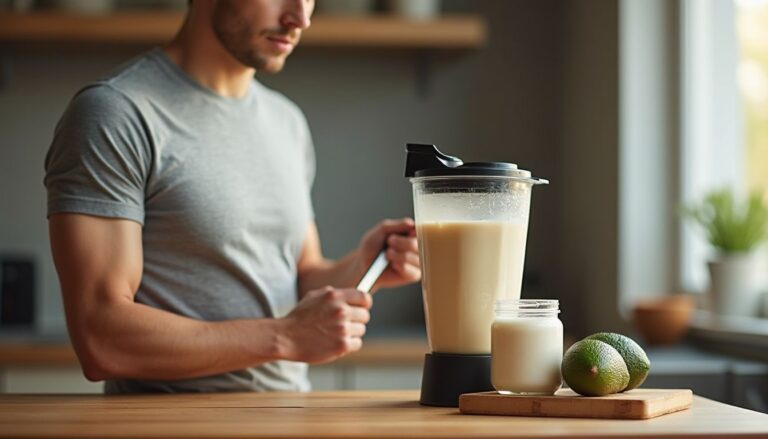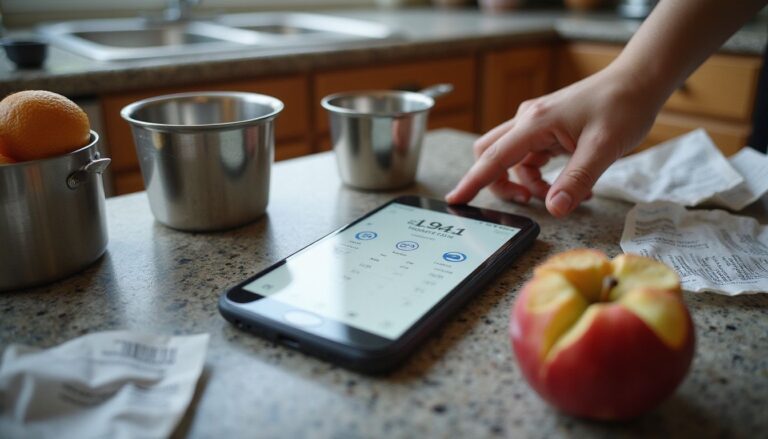Nutrition Worksheets: Fun And Educational Activities For Kids
Our Nutrition Assistant AI Suite will transform your body. You will lose fat, get toned, and build muscle. Gain confidence and optimal health.
Helping kids learn healthy eating can feel hard, especially with busy schedules. Strong habits form early, and practice makes ideas stick. Nutrition worksheets turn big ideas into simple, hands-on steps you can use right away.
These pages use color, games, and real-life examples to teach food groups, label reading, and smart portions. Children who learn how nutrients work tend to make better choices as they grow. If you want quick, proven activities that build energy and confidence, keep reading for tips, examples, and trusted sources you can print today.
Key Takeaways
- Nutrition worksheets make learning active through coloring, sorting, and quick quizzes. One study in the Journal of Nutrition Education reports up to a 20% boost in nutrition knowledge with these tools.
- About one in five U.S. children has obesity (CDC). Teaching portion sizes, food groups, and label reading lowers long-term risk for heart disease and diabetes.
- Free resources from USDA, MyPlate.gov, and CDC include printable sheets, interactive games, and complete lesson plans for preschool through high school.
- Worksheets reinforce essentials, including food groups, nutrition label skills, meal-planning practice, and how to judge healthy versus less healthy options.
- Participation increases when you add hands-on tasks and simple rewards. This approach works at home and in class with evidence-based activities.

Why is nutrition education important for kids?

Kids learn eating patterns early, and those patterns shape lifelong health. Nutrition education explains nutrients like dietary fiber, vitamins, and minerals, and how they support growth, energy, and focus.
With simple visuals such as MyPlate or the food pyramid, students learn to spot foods from each food group. That skill turns into better choices at home, in the cafeteria, and at the grocery store.
Government data show that 1 in 5 U.S. children has obesity^1^. Lessons on portions, fruits, vegetables, and daily activity help lower future risks, including heart disease and diabetes.
Schools that teach nutrition often see stronger attention and test performance^2^. Printable worksheets, short quizzes, and games help kids sort foods into healthy and less healthy categories with confidence.
Understanding how food fuels the body makes it easier to build habits that last.
…
^1^ Centers for Disease Control and Prevention (CDC), “Childhood Obesity Facts”, https://www.cdc.gov/obesity/data/childhood.html
^2^ Centers for Disease Control and Prevention (CDC), “Health and Academic Achievement”, https://www.cdc.gov/healthyschools/health_and_academics/index.htm
What are nutrition worksheets and how do they work?
Nutrition worksheets offer structured activities that teach healthy diet basics and key nutrients. Kids explore and practice ideas, then reinforce them with short, science-based tasks.
What are nutrition worksheets? Definition and purpose
Nutrition worksheets are printed or digital pages that teach healthy eating, nutrient roles, and simple food science. Topics include the food pyramid, MyPlate, measuring portions, and reading nutrition labels.
Some sheets connect with science class. They may mention ecology terms like mutualism, which is when two living things help each other, or food chain, which shows who eats what. Harder terms like autotroph and heterotroph appear in advanced units. An autotroph makes its own food, like a plant with photosynthesis. A heterotroph eats other organisms, like a human or a lion.
Formats vary. Kids match fruits and vegetables, sort meals by food group, or complete fill-in-the-blank sentences. They might analyze dietary supplements or practice label reading with math for serving sizes.
Teachers use these sheets to reinforce health standards and science goals. Families can also access free material from government sites to learn together at home.
A child’s diet sets the foundation for lifelong health habits.
I once compared my family’s dinner to MyPlate on a worksheet. It showed we needed more vegetables and fewer sugary drinks. Activities like this make science terms easier to grasp and connect food choices to daily life.
How do nutrition worksheets improve learning?
These worksheets turn nutrition facts into action. Kids can match, sort, and quiz themselves, which builds memory and confidence.
Reading a food pyramid worksheet helps students learn each group’s job in keeping them strong. In the Journal of Nutrition Education, students who used worksheets scored about 20% higher on nutrition knowledge tests than those who only listened to lectures.
Visuals, simple language, and charts support English learners. Tables make it easy to compare fiber, protein, and sugar in similar foods. Those skills transfer to meal planning and shopping later.
Short activities that review portion sizes and label facts also build critical thinking. Students begin to ask better questions and defend their choices with evidence.
What are the benefits of using nutrition worksheets?
Nutrition worksheets help kids practice the skills that shape everyday eating. They make big topics, like the food pyramid and basic biology, feel practical and clear.
How do nutrition worksheets make learning fun and interactive?
Games and puzzles turn a worksheet into a quick win. Students sort foods into food groups, color healthy recipes, and try matching exercises that connect science ideas to daily eating.
Interactive sheets ask kids to plan plates with the food pyramid or MyPlate, then test grocery simulations using real labels. Personal choice keeps attention high, and students see how their tastes fit into a balanced plan.
As one teacher shared:
Kids remember more when they can touch, move pieces, and choose answers themselves.
Drawing a plate or planning a snack helps kids see why variety matters for health, a helpful bridge to biology topics like pollination or how animals and plants support each other over time.
How do worksheets encourage healthy eating habits?
Worksheets make it simple to tell healthy from less healthy options. Students sort pictures into groups like vegetables, grains, and protein, then use that to plan balanced meals.
Common tasks include logging a one-day food diary or designing a healthy snack. Label reading practice helps kids pick items with less added sugar and more fiber. Those comparisons build smart habits fast.
Relating ideas to real life helps the lessons stick. For example, a child who learns about digestion can connect food choices to how their stomach feels after meals.
How do they develop critical thinking skills?
Many worksheets ask students to compare two foods, analyze labels, and build a balanced plate on a budget. They must decide, support their answer, and explain the tradeoffs.
Some sheets connect biology to digestion. For instance, beneficial bacteria in yogurt can aid gut health, a simple example of living things helping each other.
Students learn to read tables, spot nutrient patterns, and link food groups to body functions. In small groups, explaining choices out loud strengthens reasoning and vocabulary.
What hands-on activities do they provide?
After practicing critical thinking, kids can apply it with hands-on work. Popular activities include food-sorting games, label hunts, and build-a-plate tasks with cutouts.
Class favorites include grocery store scavenger hunts that focus on fiber or added sugar. MyPlate activities invite students to build a plate using toy foods or pictures. Some tasks ask students to track fruit and vegetable servings for a week.
Short snack labs often bring it all together. Kids assemble a simple snack with real ingredients while discussing why the mix supports health.
Popular nutrition worksheet themes
Nutrition worksheets cover familiar themes and connect them to daily choices. A clear theme helps students focus and practice new skills.
Food groups and the food pyramid basics
Many worksheets ask students to sort foods into five groups, fruits, vegetables, grains, protein, and dairy. The food pyramid and MyPlate both show how much to eat from each group.
Grains often make up a quarter of the plate, with another quarter for protein. Half the plate should be fruits and vegetables, a simple rule that supports vitamins, minerals, and fiber. Dairy, like milk or yogurt, helps with calcium and bone health.
Matching pictures to the correct group keeps practice visual and fun. Students enjoy using colored stickers for each group while they build teamwork and confidence.
USDA MyPlate guidelines updated in 2011 suggest half your plate should be fruits and vegetables for every meal. This clear target helps kids plan balanced choices.
How to read nutrition labels
Start by checking the serving size. Then look at the calories, which depend on the serving.
- Scan key nutrients, including total fat, saturated fat, sodium, and added sugars.
- Use percent Daily Value to judge whether a food is high or low in a nutrient.
- Look for fiber, vitamins, and calcium. Higher amounts support growth and strong bones.
Practice with real snacks or cereals to compare labels. A quick challenge, find the higher fiber choice with less added sugar, builds confidence and speed.
Identifying healthy vs. unhealthy food choices
Healthy foods are often lower in added sugars, saturated fat, and sodium. Fresh fruit, vegetables, whole grains, beans, and lean proteins support growth and energy.
Less healthy choices tend to be candy, soda, fried snacks, and some packaged sweets. Label reading helps you compare serving sizes and calories to make a smart pick.
Simple science connections can help. For example, yogurt with live cultures may support gut health. Choosing that instead of a sugary dessert gives the body nutrients it can use.
Planning balanced meals
After learning to sort foods, students can plan meals. Worksheets often include a plate outline and ask kids to fill each section with foods from the five groups.
Some charts cover breakfast, lunch, and dinner. Others compare a planned menu to USDA guidelines for children ages 7 to 10. Seeing the gap between the two helps students make quick swaps, such as adding a fruit or choosing whole-grain bread.
In group work, students review each other’s plates and explain how they balanced the meal. Speaking about choices reinforces learning and builds ownership.
Creative activities found in nutrition worksheets
Creative tasks invite kids to explore, test ideas, and see how healthy habits fit into daily life.
What coloring pages are suitable for younger kids?
Choose simple coloring pages with large pictures of fruits, vegetables, and food groups. Clear outlines help kids practice control while keeping attention on shape and color.
Some pages show nature scenes, like bees pollinating flowers, to illustrate how living things support growth. These images pair well with messages about eating a range of plants.
Black-and-white sheets print easily and keep the focus on basic skills. Children learn to name foods while building hand-eye coordination.
How do interactive sorting games work?
After coloring, try sorting games. Kids move pictures or cutouts into labeled groups, such as fruits and vegetables or healthy and less healthy snacks.
Students enjoy placing items into baskets labeled by food group. That movement helps memory, especially for ages six to twelve. The games work well in pairs or small groups and are easy to repeat.
What are matching exercises on food groups?
Matching tasks ask students to pair foods with the correct group, such as fruits, vegetables, grains, protein, or dairy. They might draw lines from bread to grains or from cheese to dairy.
These exercises give fast feedback and build confidence. Teachers use them to reinforce core ideas before moving to meal planning.
How to use meal planning and grocery shopping simulations
Meal planning and shopping simulations show how choices play out in real life. Students plan a menu for a day using all five food groups, then make a pretend grocery list to match it.
Printable sheets can include prices and a budget. Kids compare labels, pick whole grains over refined grains, and aim for fiber and less added sugar. In one third grade group, students had fun staying within a budget while still filling half the plate with fruits and vegetables.
Where to find free nutrition worksheet resources
High quality resources are available at no cost. These options work for home and classroom learning and cover many ages.
Printable nutrition worksheets for all ages
Find free printable worksheets for preschoolers, teens, and adults. Topics include food groups, label reading, portion sizes, and meal planning.
Trusted sources include USDA, Eat Right, and CDC. Many pages use age-appropriate language and visuals while remaining challenging for older students. Coloring pages, label analysis sheets, and planning templates help you start today.
Teachers and families report better engagement when students can hold the work in their hands and check progress on paper.
Free coloring pages of food groups
Access free food group coloring pages from MyPlate.gov and the Academy of Nutrition and Dietetics. Sheets feature fruits, vegetables, grains, protein foods, and dairy.
Coloring supports memory and recognition. A child who colors broccoli green or apples red is more likely to notice those foods at lunch or in the store.
Use these pages along with sorting games to reinforce a balanced plate.
Interactive digital nutrition worksheets online
Interactive worksheets use drag-and-drop tasks, instant feedback, and short quizzes. Nutrition.gov offers lessons that match foods to groups or build a plate online.
Resources exist for every age. Younger children enjoy animated stories that model good choices. Older students can try virtual grocery trips with a budget and compare labels in real time.
Progress tracking lets students repeat tricky topics until they master them. Many platforms also provide printable versions for extra practice.
How to use free nutrition bingo for kids
Nutrition bingo turns review into a game. Print bingo cards with food groups, healthy foods, or short nutrition facts.
Call out clues during class or meals. Kids mark their cards and aim for a row. Small rewards like stickers increase excitement and motivate participation.
Themes can rotate, such as vegetables, breakfast choices, or water and hydration. Pair play with a quick discussion to lock in learning.
How can you use nutrition worksheets effectively?
To get results, connect worksheets to your daily routine. Clear goals, short tasks, and steady practice work best.
How to add worksheets to daily lessons
Select worksheets that match the day’s objective and your students’ level. In grade 2, try simple food group sorting before snack time.
Use sheets as warm-ups, quick checks, or review after a hands-on demo. After building a plate with play food, a short worksheet helps students summarize what they learned.
Rotate stations during health or science blocks. Let small teams complete pages together to build collaboration. A short take-home sheet links school ideas to family meals.
Using worksheets for family nutrition activities
Bring worksheets to the dinner table for a few minutes of practice. Give each family member an age-appropriate task, such as matching foods to groups or planning a balanced plate for tonight’s meal.
Build a healthy grocery list together using a checklist worksheet. Studies suggest that children involved in planning tend to eat more vegetables and build stronger habits over time1.
Try mini challenges like nutrition bingo or a label hunt in the pantry. Ask everyone to find a high-fiber item and explain how they know using the label.
…
1: Tague et al., “Family Meals and Adolescent Well-Being,” JAMA Pediatrics, 2020
How to tailor activities for different age groups
Match the task to the learner. Young children often prefer coloring and simple sorting games with pictures.
Elementary students can read labels and complete matching exercises for balanced meals. These build logic and vocabulary while reinforcing healthy choices.
Teens respond well to real-world tasks like meal planning, budget shopping, and weekly menu design with label comparisons. One middle schooler enjoyed planning a family dinner and checking serving sizes for each dish.
Additional tools and resources for nutrition education
Digital tools and ready-to-use printables make teaching faster and more consistent. Pick a few favorites and revisit them often.
What MyPlate resources and apps are available?
The U.S. Department of Agriculture offers MyPlate printables, posters, and quizzes for kids and families. The Start Simple with MyPlate app helps you track food groups and set goals.
MyPlate Kitchen features recipes that follow the guidelines. MyPlate Kids’ Place includes games, activity sheets, and short videos. Many teachers use these to reinforce food group lessons in a fun way.
Where to find free nutrition lesson plans for teachers
USDA Team Nutrition and CDC Healthy Schools provide free lesson plans, activity guides, and handouts by grade level. The Dairy Council of California shares curriculum for elementary and middle school.
Nonprofits such as the Alliance for a Healthier Generation and Action for Healthy Kids offer standards-aligned plans, printable worksheets, and interactive tasks. Eat Right and Nourish Interactive add themed lessons and games.
Many plans align to Common Core or state health standards. Clear instructions make it easy to add nutrition to your existing curriculum.
What educational videos and games support nutrition learning?
Short videos from MyPlate Kids’ Place teach food groups and balanced meals. Clips show real examples from schools and homes.
Interactive games such as Food Detectives Fight BAC! and PBS Kids Lunch Crunch build quick decision-making skills. Apps like Smash Your Food reveal sugar, salt, and fat in common foods. Animated series such as Super Crew also encourage daily fruit and vegetable choices.
Videos and games add variety and keep attention high, which helps habits stick.
How can you encourage kids to stay engaged with nutrition?
Small steps and quick wins build momentum. A simple plan keeps kids motivated and curious about food.
How to set goals for healthy eating
Pick one or two small goals, such as one extra vegetable serving per day or water instead of soda at lunch. Small goals feel doable and show progress fast.
Track meals on a worksheet or app. Try weekly swaps, like fruit for chips at snack time or whole-grain bread for white. Share goals with your family and review them weekly.
In my experience, writing goals down makes change easier. Celebrate wins such as a full week of balanced breakfasts.
What are good ways to reward participation?
Use simple rewards that celebrate effort. Stickers, achievement certificates, or a few extra minutes of free time work well for younger students.
Older students may enjoy choosing the next activity or earning a nutrition leader badge. Public praise for smart choices boosts motivation without using food as a prize.
Recognizing progress keeps kids engaged across weeks and units.
How to make nutrition learning a lifelong habit
Build short nutrition moments into your routine. Post a weekly goal on the fridge and keep a few favorite worksheets nearby.
Revisit label reading during grocery trips. Plan balanced lunches together on weekends. Share a quick story about a new recipe or a food you tried and liked.
Positive experiences add up. Over time, kids learn to make healthy choices on their own.
Conclusion
Nutrition worksheets turn lessons about food groups, labels, and portions into practical actions. Kids learn by coloring, sorting, planning, and checking their choices, which helps knowledge stick. Use trusted, free resources to support learning at home and in class.
As with any health topic, consult a healthcare professional for personal advice if you have specific concerns. With clear steps and engaging activities, nutrition education can be enjoyable and effective for every age.
FAQs
1. What are nutrition worksheets and how do they help children learn about healthy eating habits?
Nutrition worksheets are structured activities designed to teach young people about food groups, balanced meals, and the importance of nutrients. These educational tools use games, quizzes, and visual aids to make learning engaging while reinforcing key concepts from credible sources such as the Centers for Disease Control and Prevention.
2. Which types of fun activities can be found in nutrition worksheets for kids?
Nutrition worksheets often include matching exercises that pair foods with their nutrient content, coloring pages showing different fruits or vegetables, meal planning charts, and simple puzzles focused on identifying healthy snacks. These tasks encourage active participation while supporting evidence-based learning outcomes.
3. How can parents or teachers measure progress using these educational materials?
Parents or educators can track improvement by reviewing completed worksheets over time; comparing quiz scores; observing increased knowledge during discussions; or noting changes in snack choices at home or school settings. Studies show regular exposure to interactive lessons improves both understanding and retention of nutritional information among youth.
4. Are there any proven benefits when children use nutrition worksheets regularly?
Research indicates that consistent engagement with nutrition-focused activities helps students remember facts about vitamins, minerals, portion sizes, and balanced diets more effectively than passive instruction alone (CDC Healthy Schools). In my experience as a classroom volunteer leading weekly worksheet sessions last year, I observed greater enthusiasm for trying new foods after hands-on lessons compared to traditional lectures.
Summary: Nutrition worksheets offer practical ways for young learners to understand essential dietary principles through enjoyable tasks supported by scientific research. Regular practice leads to better knowledge retention and healthier food choices according to multiple studies in child education literature.







